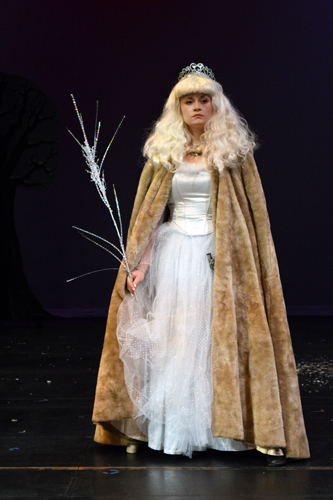Happy #FrontRowFriday, Encore friends! You’ve had the chance to meet Production Apprentice Kyla McLaughlin – now you get to discover one of her wonderful talents. Kyla has a background in the art of dramaturgy and is kind enough to share some of her knowledge with all of us here on the blog. We look forward to learning more about dramaturgy and diving deeper into this season’s productions throughout the year!

Dramaturgy is the study of how and why a play works the way it does. A dramaturg works with the director, cast, designers, and other members of the production team to investigate a script and figure out how best to represent it on stage for their particular audience. The dramaturg might ask how and why characters interact with each other and their world the way they do, as well as elaborate on connections made in the script. Whether or not a production has a designated dramaturg, everyone does a bit of dramaturgy as they get to know the world of the play through their artistic work.

In Encore’s upcoming production of Disney’s Frozen Jr, the dramaturg might first look into the production history of Frozen. As you probably already know, Disney released the film Frozen in 2013 to immediate acclaim. Within a few months of release, Disney executives had announced the development of a Broadway musical adaptation which would delve into “how the…princesses’ psychological scars drive them to make certain decisions,” according to composer Kristin Anderson-Lopez in an interview for Time Magazine.
The musical expands on the magical world of Arendelle with brand-new songs and scenes that let the audience into the mysteries of the kingdom and explore questions left unanswered in the film. The musical opened at the St. James Theatre in New York City in March of 2018 and received several Tony and Drama Desk Award nominations as well as one Drama Desk win for Outstanding Puppet Design.

The story of Frozen is loosely based on Hans Christian Andersen’s The Snow Queen, published in 1844. In The Snow Queen, a young boy named Kai falls victim to a frozen heart and, subsequently, disappears into the wilderness to the Snow Queen’s ice palace where he is held captive. His friend, Gerda, with the help of a reindeer, sets out to rescue him and thaw his frozen heart. The Snow Queen allows them to return to the village and, when they do, they find they’ve grown up and it is now summer.
While Frozen is only loosely based on The Snow Queen, a dramaturg would take note of the pieces that remain and the elements that have changed in the adaptation from Hans Christian Andersen’s story to the film and, subsequently, to the Broadway production. The dramaturg would note the ways The Snow Queen survives in Frozen through Arendelle’s Nordic culture which connects to Andersen’s native Denmark and the maintenance of a fairytale structure across both versions of the story. Even the characters’ names indirectly point to the original author (try saying “Hans Kristoff Anna Sven” out loud.)

So, what? What do all these connections tell us about the story and why does it matter? By reading and considering the script and its history deeply, we can see that the most significant shift between The Snow Queen and Frozen was in changing the act of true love saving a person from a frozen heart to the significance of true love between sisters. This shift runs inherently counter to traditional fairytales, which always seem to end with a Prince, a Princess, and a Happily Ever After, and works to unsettle the presumption that Anna would give up her sister in exchange for a Prince Charming.
Instead, these sisters choose, over and over again, to protect and trust each other, even when no one else does and when the world tells them they’re wrong. To anyone investigating this script for deeper dramaturgical meaning, Elsa and Anna’s love for each other in the context of distrust and fear in Arendelle as a result of Elsa’s powers are paramount to understanding what drives all the characters toward their actions within their world.
Performance Dates and Showtimes:
Friday, October 11, 2019 at 7:30 pm
Saturday, October 12 and 19, 2019 at 11 am and 3 pm
Sunday, October 13 and 20, 2019 at 3 pm
Thursday, October 17, 2019 at 7:30 pm
Photos by Larry McClemons and Aileen Pangan Christian. Blog contribution by Kyla McLaughlin. Edited by Shannon McCarthy.

